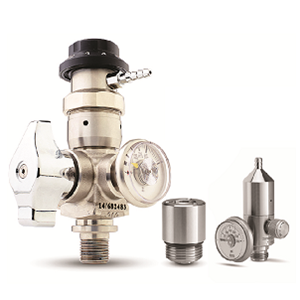3 Key Selection Factors for Gas Calibration Applications

By Charles Strobel
It's not like you're doing it wrong. It's just that you might not be doing it as precisely or efficiently as possible given recent technological advancements.
Sure, you may have the industry's top-rated sensors and detectors. Your procedures may be world-class. Your gas provider may be second to none. But surprisingly, what can sometimes be overlooked are the fundamentals.
The simple fact is, the gas equipment you use can dramatically impact the calibration process itself. With that in mind, here are few key factors for selecting equipment designed to optimize your calibration procedures—and ultimately, the accuracy, reliability and safety of your organization's work. But first, let's look at the basics.
Gas Guides the Way
A calibration gas, of course, is a reference gas or gas mixture used as a comparative standard in the calibration of analytical instruments, like gas analyzers or gas detectors. That means the calibration gas itself must maintain a precisely-defined composition, such as zero gas or span gas (for example, 500 ppm carbon monoxide in nitrogen).
Depending on specific requirements, calibration applications typically involve either portable, 0.4 to 5-liter cylinders capable of covering many grades of mixtures or pure gases—or fixed, 5- to 80-liter cylinders installed close to analytical instruments in laboratories.
The truth is, traditional gas cylinders and their associated valves, selectors, regulators, and connectors may serve you perfectly. But for some applications, these options could be making the process of getting precise calibration harder and more time consuming than it really needs to be. Here's a look at three key factors modern laboratories may find themselves needing to consider when selecting equipment:
#1 Transportability
When using portable systems, the idea is to have an easy, ready-for-use setup, right? The classic, cost-effective solution has always been the use of a small cylinder with a CIO—and that may be just fine. But some applications require more sensitive gas control. For this, newer, more advanced cylinder valves with integrated dial flow regulators may make a better choice.
#2 Risk Factors
Different usage environments require varying levels of safety protection. In fixed environments, the age-old cylinder & valve with separate regulator configuration may be sufficient. Unfortunately, that traditional regulator isn't secured, and is vulnerable to accidental impact when cylinders are moved during use. Safety risks in these situations can be minimized by using integrated valves, which reduce connection points to regulators and peripheral instrumentation.
Let's also not forget the changeover of a high-pressure regulator from one cylinder to another—an notorious safety and gas-contamination risk if not done properly. Though proper training is always necessary, today's top equipment providers offer valve solutions that help make changeovers safer and easier by keeping the changeover in the low-pressure zone.
#3 Handling Requirements
Calibration gasses require special handling equipment to maintain gas purity and prevent contamination from ambient pollutants and air humidity. All components used in gas equipment should be designed and machined to prevent contamination due to small particles from the equipment itself during storage, connection or use. If a provider can't guarantee that, find another that can.
Better, Faster, Safer—or Status Quo?
For many, these three factors will only reaffirm their current gas equipment selections. For others, the existence of newer, fully-integrated solutions may come as a welcome surprise.
In either scenario, top-tier providers can help organizations find the right peripheral solutions for portable, fixed and disposable gas cylinders. The Puretec line from Rotarex Ceodeux, for example, offers a full line of traditional solutions, as well as the first integrated valves on the calibration market. In fact, Puretec solutions integrate essential peripheral devices into a single, mono-body valve assembly—no pre-use assembly or fittings required.
Considering the efficiencies and safety measures these kinds of technologies bring to gas calibration applications, they may be perfect for labs with high-sensitivity operations.
Especially ones that are sticklers for things like accuracy, performance and peace of mind.








